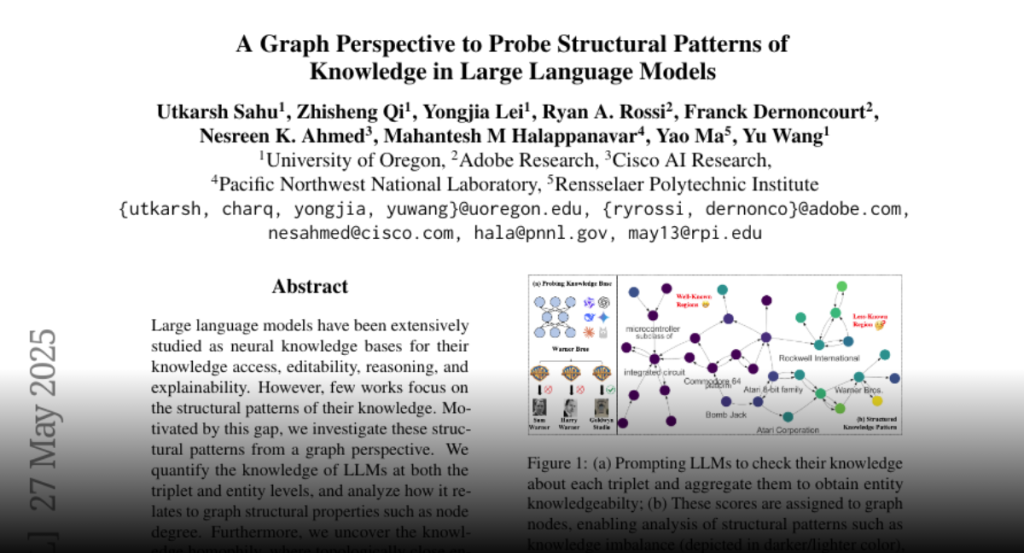The study explores the structural patterns of knowledge in large language models from a graph perspective, uncovering knowledge homophily and developing models for graph machine learning to estimate entity knowledge.
Large language models have been extensively studied as neural knowledge bases
for their knowledge access, editability, reasoning, and explainability.
However, few works focus on the structural patterns of their knowledge.
Motivated by this gap, we investigate these structural patterns from a graph
perspective. We quantify the knowledge of LLMs at both the triplet and entity
levels, and analyze how it relates to graph structural properties such as node
degree. Furthermore, we uncover the knowledge homophily, where topologically
close entities exhibit similar levels of knowledgeability, which further
motivates us to develop graph machine learning models to estimate entity
knowledge based on its local neighbors. This model further enables valuable
knowledge checking by selecting triplets less known to LLMs. Empirical results
show that using selected triplets for fine-tuning leads to superior
performance.

